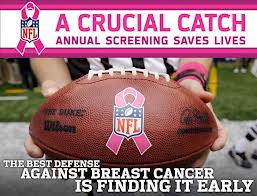 As I said in an earlier post this week, I am currently in Reno, Nevada at Boys & Girls Clubs of America’s Pacific Leadership Conference. The conference is being held at Silver Legacy Resort & Casino. Of course, in order to get from the hotel to the conference sessions, you need to walk through the casino where you are bombarded by all sorts of “shiny objects”.
As I said in an earlier post this week, I am currently in Reno, Nevada at Boys & Girls Clubs of America’s Pacific Leadership Conference. The conference is being held at Silver Legacy Resort & Casino. Of course, in order to get from the hotel to the conference sessions, you need to walk through the casino where you are bombarded by all sorts of “shiny objects”.
By shiny objects, I mean:
- Slot machines
- Bars
- Blaring music & P.A. announcements
- Gaming tables with dealers
- Alarm bells announcing winners
- Restaurants and delicious smelling food
- Distracting blinking lights
- Interesting decorations
I literally found my eyes darting all over the place. I’m not a gambler, but I was definitely tuned in and engaged with what was going on all around me.
When you consider how much money casinos make, it is hard to argue with all of these shiny object tactics.
As I sat in my exhibitor booth, I kept watching the salesperson at Markel Insurance spinning a “Wheel of Fortune” type of prop. As the minutes and hours ticked by slowly, I couldn’t help focus in on how this wheel worked its charm on conference attendees. Someone could be wandering by the Markel booth with no intention of stopping, but the moment that wheel started clicking and whirling people stopped to pay attention.
Shiny objects . . . human being like them. A LOT!
All of this got me thinking . . .
What types of shiny objects do non-profit organizations use to capture the attention of donors, clients, and volunteers?
 In an effort to make the time pass more quickly, I started making a list. Admittedly, I started thinking way outside of the box, but here is some of what I came up with:
In an effort to make the time pass more quickly, I started making a list. Admittedly, I started thinking way outside of the box, but here is some of what I came up with:
- newsletters
- websites
- Facebook pages
- Twitter feeds
- Various other social media platforms (e.g. Pinterest, LinkedIn, etc)
- Texting
- Newspaper stories (e.g. earned media)
- Newspaper advertising (e.g. public service announcements)
- Outdoor advertising (e.g. billboard)
- Cable advertising
- Phone calls to donors
- Announced challenge gifts
- Radio ads
- Special event fundraisers
- Press conferences
- Town hall meetings
- Constant Contact e-blasts
- Online advertising (e.g. Google ads, Facebook ads, etc)
- Sending your executive director out in public (e.g. speaking at city council, Rotary meetings, etc)
- Hosting small cultivation or stewardship events in board members living rooms
- Direct mail
- Health and community service fares
- Cause related marketing campaigns
I suspect the list could probably go on and on and on.
As I stepped back and started contemplating how many shiny objects I had identified, I suddenly realized the problem with the road I was walking down.
The casino throws their shiny objects at their customers all at once. It is like an amazing fireworks finale that never stops. Most of the non-profits I could think of that do messaging well, use an eyedropper to carefully measure out their marketing efforts.
I am hard pressed to think of many examples of cross-channel messaging by a non-profit organization. The few that come to mind might used two or three different channels to cross promote their message. For example, a year-end direct mail appeal referencing a website address along with volunteers following up with a phone call solicitation.
This is not exactly comparable to my experience at the Silver Legacy Resort & Casino this week.
Let me end this post by asking for your help:
- Please help me add to my laundry list of shiny objects used by non-profit organizations.
- Please highlight communications efforts that utilize more than a few channels to engage supporters.
- Please weigh-in with your suggestions on how non-profits can get better at lighting up the world around them.
You can share your thoughts and experience by using the comment box below. Why? Because we can all learn from each other.
Here’s to your health! (Enjoy additional pictures I’ve included from the conference that I’ve pasted into this post below my signature block)
Erik Anderson
Founder & President, The Healthy Non-Profit LLC
www.thehealthynonprofit.com
erik@thehealthynonprofit.com
http://twitter.com/#!/eanderson847
http://www.facebook.com/eanderson847
http://www.linkedin.com/in/erikanderson847







 In yesterday’s post titled “
In yesterday’s post titled “ From what I’ve heard and read, many non-profit organizations are concerned about how the government shutdown will impact their funding. Consider the following:
From what I’ve heard and read, many non-profit organizations are concerned about how the government shutdown will impact their funding. Consider the following: In the weeks leading up to the government shutdown, I heard some rumblings via the news media that Senator Ted Cruz and those aligned with him were dragging things out in Congress to maximize their online and direct mail fundraising efforts. To be honest, I didn’t give much thought to those accusations. They sounded like sour grapes and something partisan opponents would say in the heat of the moment. And then . . . when the government actually shut down, I started receiving a flood of email from the Democratic Congressional Campaign Committee (DCCC). This is when my fundraising spidey-sense started to tingle, and I started paying attention because there must be lessons to be learned for non-profit organizations somewhere in this mess.
In the weeks leading up to the government shutdown, I heard some rumblings via the news media that Senator Ted Cruz and those aligned with him were dragging things out in Congress to maximize their online and direct mail fundraising efforts. To be honest, I didn’t give much thought to those accusations. They sounded like sour grapes and something partisan opponents would say in the heat of the moment. And then . . . when the government actually shut down, I started receiving a flood of email from the Democratic Congressional Campaign Committee (DCCC). This is when my fundraising spidey-sense started to tingle, and I started paying attention because there must be lessons to be learned for non-profit organizations somewhere in this mess. Here is what I’m seeing:
Here is what I’m seeing: When crafting your case for support, this is what our friends in the political fundraising world seem to be telling their non-profit cousins:
When crafting your case for support, this is what our friends in the political fundraising world seem to be telling their non-profit cousins: Over the years, I’ve urged non-profit organizations to exercise tremendous caution when contemplating a cause related marketing strategy as part of their resource development plan. There was the December 2012 post titled “
Over the years, I’ve urged non-profit organizations to exercise tremendous caution when contemplating a cause related marketing strategy as part of their resource development plan. There was the December 2012 post titled “
 If you want to know more about this campaign, Forbes magazine’s Alicia Jessop did a nice job in an October 2012 article titled “
If you want to know more about this campaign, Forbes magazine’s Alicia Jessop did a nice job in an October 2012 article titled “ Welcome to O.D. Fridays at DonorDreams blog. Every Friday for the foreseeable future we will be looking at posts from John Greco’s blog called “
Welcome to O.D. Fridays at DonorDreams blog. Every Friday for the foreseeable future we will be looking at posts from John Greco’s blog called “ Do you know Jay Love? Of course, you know this gentleman, but you just may not know that you know him. Many non-profit professionals know Jay as the man who innovated the online donor database system known as eTapestry. More recently, you may have heard whispers about a new online CRM product called Bloomerang, which focuses on donor loyalty instead of more transactional metrics found in traditional donor databases. Well, that is Jay’s newest gift to the non-profit sector.
Do you know Jay Love? Of course, you know this gentleman, but you just may not know that you know him. Many non-profit professionals know Jay as the man who innovated the online donor database system known as eTapestry. More recently, you may have heard whispers about a new online CRM product called Bloomerang, which focuses on donor loyalty instead of more transactional metrics found in traditional donor databases. Well, that is Jay’s newest gift to the non-profit sector.
 Welcome to O.D. Fridays at DonorDreams blog. Every Friday for the foreseeable future we will be looking at posts from John Greco’s blog called “
Welcome to O.D. Fridays at DonorDreams blog. Every Friday for the foreseeable future we will be looking at posts from John Greco’s blog called “ The point I’m trying to make is that most non-profit organizations have built a culture that revolves around THE CLIENT. This focal point is so intense that ideas threatening to shift that focus are often seen as heresy.
The point I’m trying to make is that most non-profit organizations have built a culture that revolves around THE CLIENT. This focal point is so intense that ideas threatening to shift that focus are often seen as heresy.
 The following is a thumbnail sketch of what my process looked like:
The following is a thumbnail sketch of what my process looked like: I am not suggesting that my process is the right way to put a non-profit budget together. However, I do believe strongly in the following few budget construction principles:
I am not suggesting that my process is the right way to put a non-profit budget together. However, I do believe strongly in the following few budget construction principles: Every year, it seems like one of the charities I support is celebrating some kind of anniversary or milestone. Most of the time, it relates to the age of the organization, and it is typically a milestone like 25, 50, 75 or 100 years of existence. Sometimes it is a different kind of anniversary, where they’re celebrating a board member’s years of service or the age of something physical like a building. Regardless of the opportunity to celebrate, a fundraising solicitation is never far behind; however, anniversary celebrations can be so much more than just putting your hand out.
Every year, it seems like one of the charities I support is celebrating some kind of anniversary or milestone. Most of the time, it relates to the age of the organization, and it is typically a milestone like 25, 50, 75 or 100 years of existence. Sometimes it is a different kind of anniversary, where they’re celebrating a board member’s years of service or the age of something physical like a building. Regardless of the opportunity to celebrate, a fundraising solicitation is never far behind; however, anniversary celebrations can be so much more than just putting your hand out. A few weeks ago, I started getting email and snail-mail announcing the 100th anniversary of the
A few weeks ago, I started getting email and snail-mail announcing the 100th anniversary of the  For example . . .
For example . . . I was reviewing some old non-profit board governance material this morning and came across a document talking about “trends in non-profit governance“. In other words, the person who wrote that paper thought s/he was able to predict the future. Of course, this document was written more than 10 years ago, which got me thinking it might be fun to review some of their trends and determine where they were right or wrong.
I was reviewing some old non-profit board governance material this morning and came across a document talking about “trends in non-profit governance“. In other words, the person who wrote that paper thought s/he was able to predict the future. Of course, this document was written more than 10 years ago, which got me thinking it might be fun to review some of their trends and determine where they were right or wrong.